Around the turn of the century I made some art. This art was stolen by someone I thought I could trust. They put it in a hoax, called the Isaac Caret hoax. They also stole 3D rendering mockups from many different artists online, of UFOs.
That was nearly a quarter of a century ago.
For the longest, I did nothing. When the artwork was first stolen nearly 25 years ago, I consulted a lawyer, who told me that nothing could be done. The art was out there; and that was that. The bell could not be unrung. I also feared being sued by the person who stole my artwork, because they threatened to sue me if I ever told anyone. No idea how that would’ve worked: but I’m taking my chances, now. (At the time, I was told that the fact that my full legal (deadname now) name was encoded in the chart essentially meant nothing when it came to copyright lawsuits: ‘just because you put your name on it, doesn’t mean you own it.’ No idea how true that is but that’s 90% of why I didn’t say shit about it until now.)
Every time I see this shit get used, I die a little inside.
And I certainly fucking died a little inside when I saw the symbols I made up, come up in a History Channel special on space aliens.
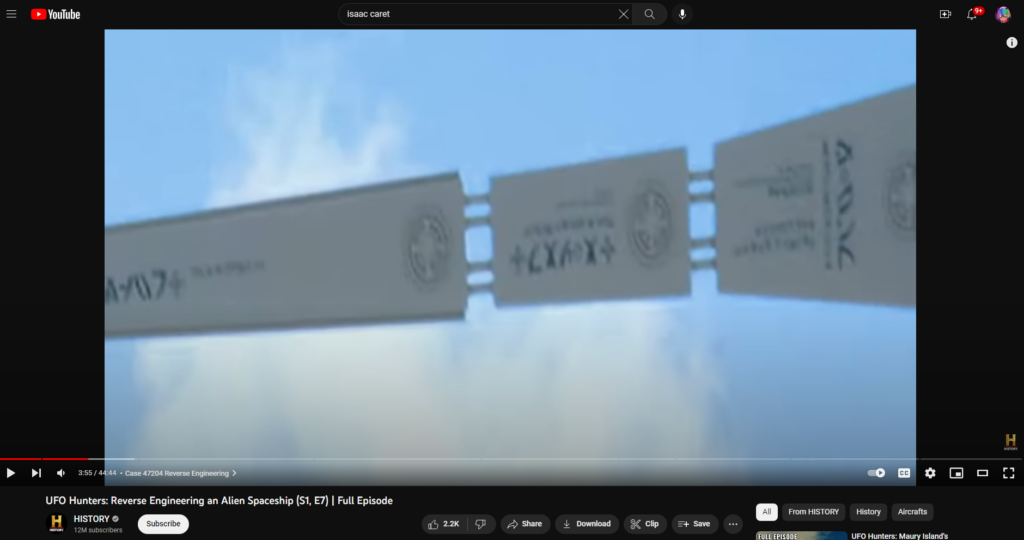
What I made
I made the imagery that was compiled into this chart.
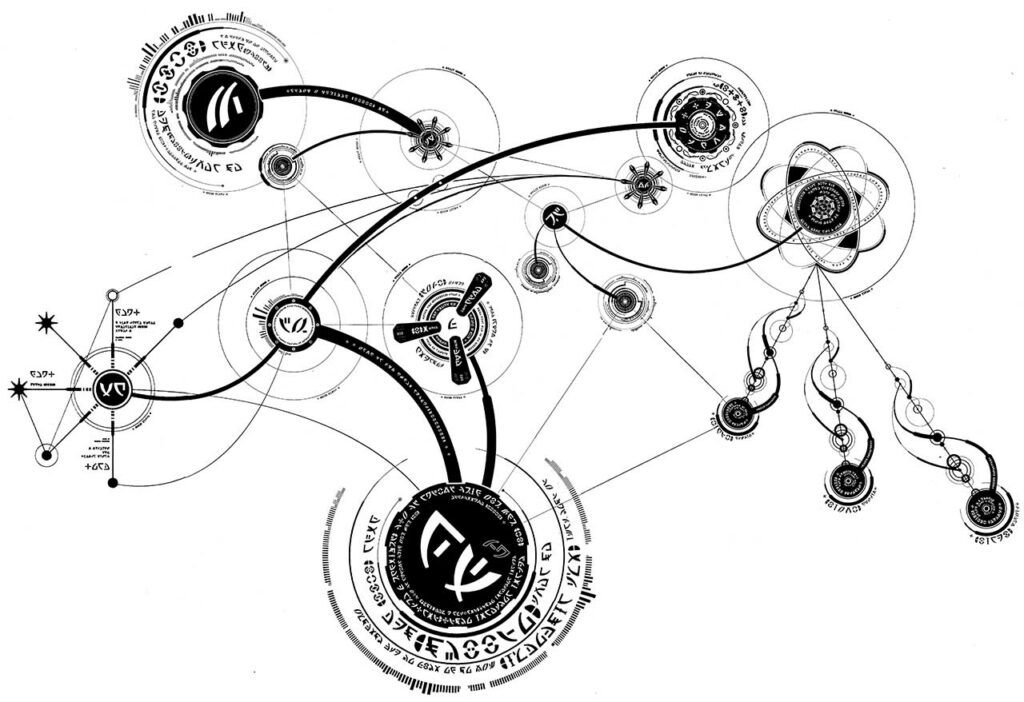
This is not the original chart. This is also not all of what I made. Things that I made were compiled, online, by someone else, into the chart you see above. I don’t know who did that; I’m guessing it happened after the hoax was already circulating for some time, online.
Why I made it
As a child I suffered several traumatic brain injuries. Whether or not that was what caused my recurring bouts of amnesia, I do not know. All I can say is that it probably didn’t help.
The end result is I went through periods where I would wake up and not remember my name; and that didn’t matter. But I wouldn’t remember the names of people I loved, or recognize their faces.
At the time it was suggested to me that encoding information in as many ways as I could, in as many languages as I could, might help me remember things in the future. I had a love of cryptography, so when I ran out of languages, I made my own. And I made this work of art, dedicated to my loved ones, where I encoded their names in a cipher. I did it to honor them.
It was never supposed to get out and be seen by a lot of people. But it was leaked by someone whom I thought I could trust, and now, here we are.
How to read it
I don’t want to teach you how to read it. I was violated once, and I don’t want to feel that way again. But I fear that, if I don’t speak out now, I may lose this thing forever.
I think the only way I can really prove to you that I made it is to tell you how I made it— and what it says.
Each element of this chart contains the name of a loved one who I never wanted to forget.
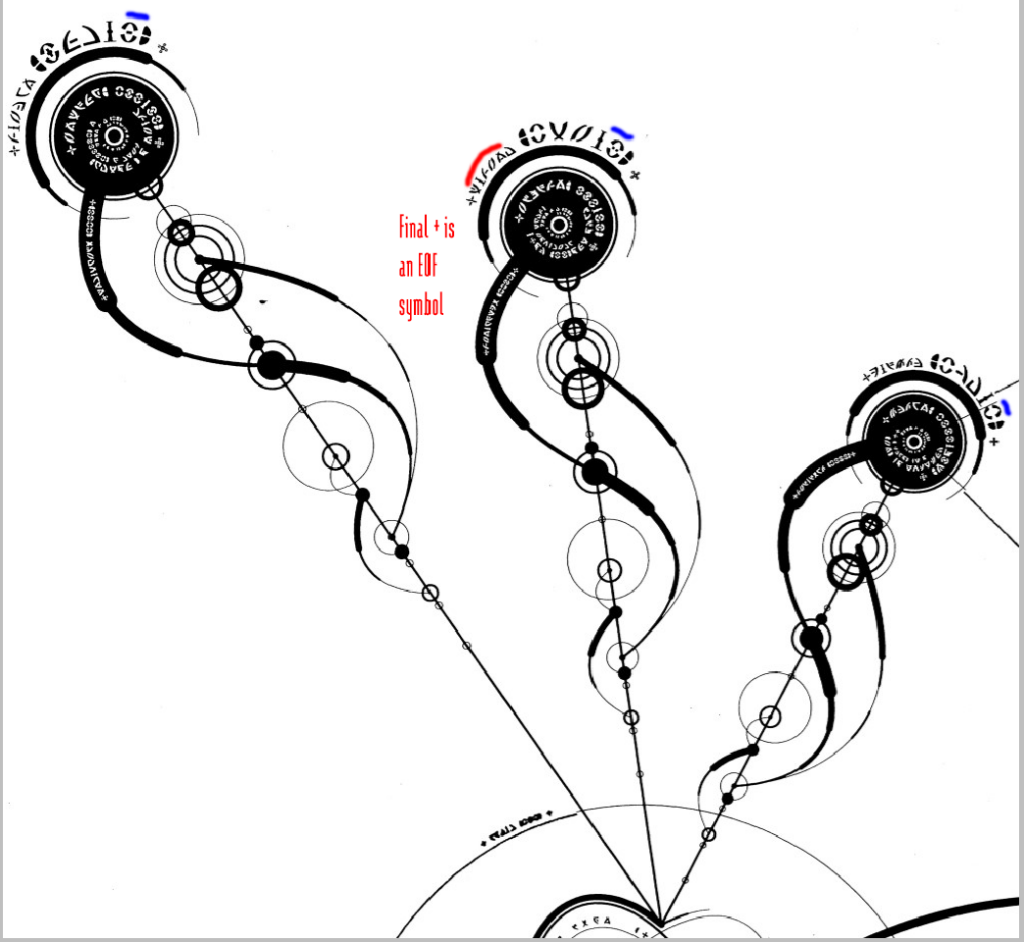
At the top of these spires are encoded the names Lilith; Elizabeth; and Shannon. The red is the name; the blue is the birth order. Empty ( ) means first or zeroth; one dot or line, horizontal or vertical, is one; two dots is two. These were probably encoded in Japanese-style moras: for example, E RI ZA BE TSU, and so on. I believe I actually alternated ciphers on these, which would make it that much harder to translate.
The rest of the chart is encoded in three to four different ciphers, depending on how you count. If you count character reversals, it might be encoded in eight different ciphers. Maybe even nine.
I no longer have the original papers I used to keep track of the cipher. However, I can tell you what each of these read.
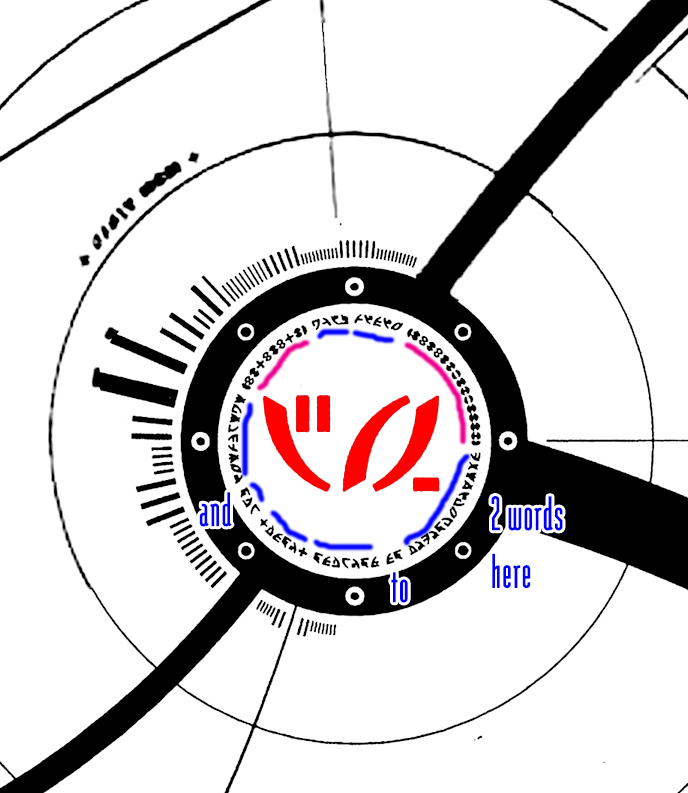
The center of each ‘Core’ has the first name of a loved one I didn’t want to forget. This reads “Hana”. It’s a version of the Japanese katakana for ‘ha’, ハ. HA NA. (Right to left, in this image)
Hana was what I call my ‘step-aunt’. She is my Godmother. If you’ve heard me talk before, she’s the one who taught me how to make mozzarella. (´•ω•`) (◕ᴗ◕✿)
I don’t particularly remember which is read left to right or right to left, or if this image is even reversed. Given that it’s a cipher, it doesn’t really matter. The minute you find out what a few words are, it’ll be easy to figure out; but even when I was making this thing, I would often get confused.
The smaller text along the inner ring is a sentence. It is not transliterated: it is in character-for-character English, only written in the ciphertext alphabet. It’s been almost a quarter of a century, and to be perfectly honest with you, I can’t tell you what it says. But I remember, plain as day, all the plaintext, cleartext things that I used to generate the ciphertext: so I’ll tell you those, in a minute or so.
I want to note that I purposefully did not obfuscate English particles, to make it easier to decode. You can find many of these two and three letter words in the chart: when you see them, you can safely assume they are a character-for-character English particle. ‘and’ and ‘to’ are merely guesses: it could be ‘for’ and ‘of’, or any other particles of that length. (I once toyed with making every word a random length, so that you couldn’t figure it out this way. I quickly declined because it was nearly impossible to decode that way.)
The things underlined in pink are gibberish, as far as I remember. Though it won’t help prove anything, the number 1204 is encoded many times in the images simply because that was the number of our apartment.
The bar code doesn’t mean anything, and the text on the outer ring is sadly too badly degraded to be of use to us now. But I don’t think we’re missing anything.
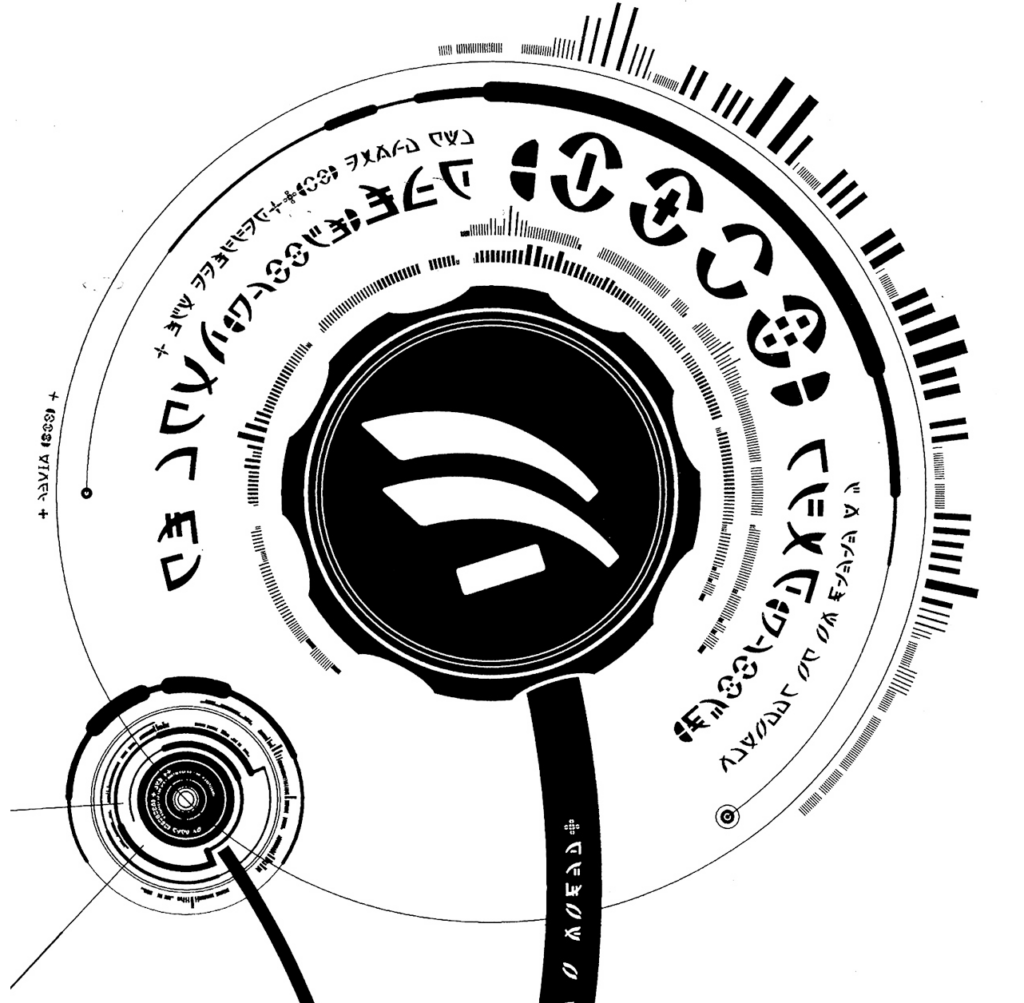
This is the character Shi, or ‘シ‘, just with the sizes of the three lines all switched around. It was used as a way to remind me of how to pronounce one loved one’s name in their nature language.
Again, the number 1 2 0 4 can be seen: ( – ) ( + ) ( ) ( Four dots )
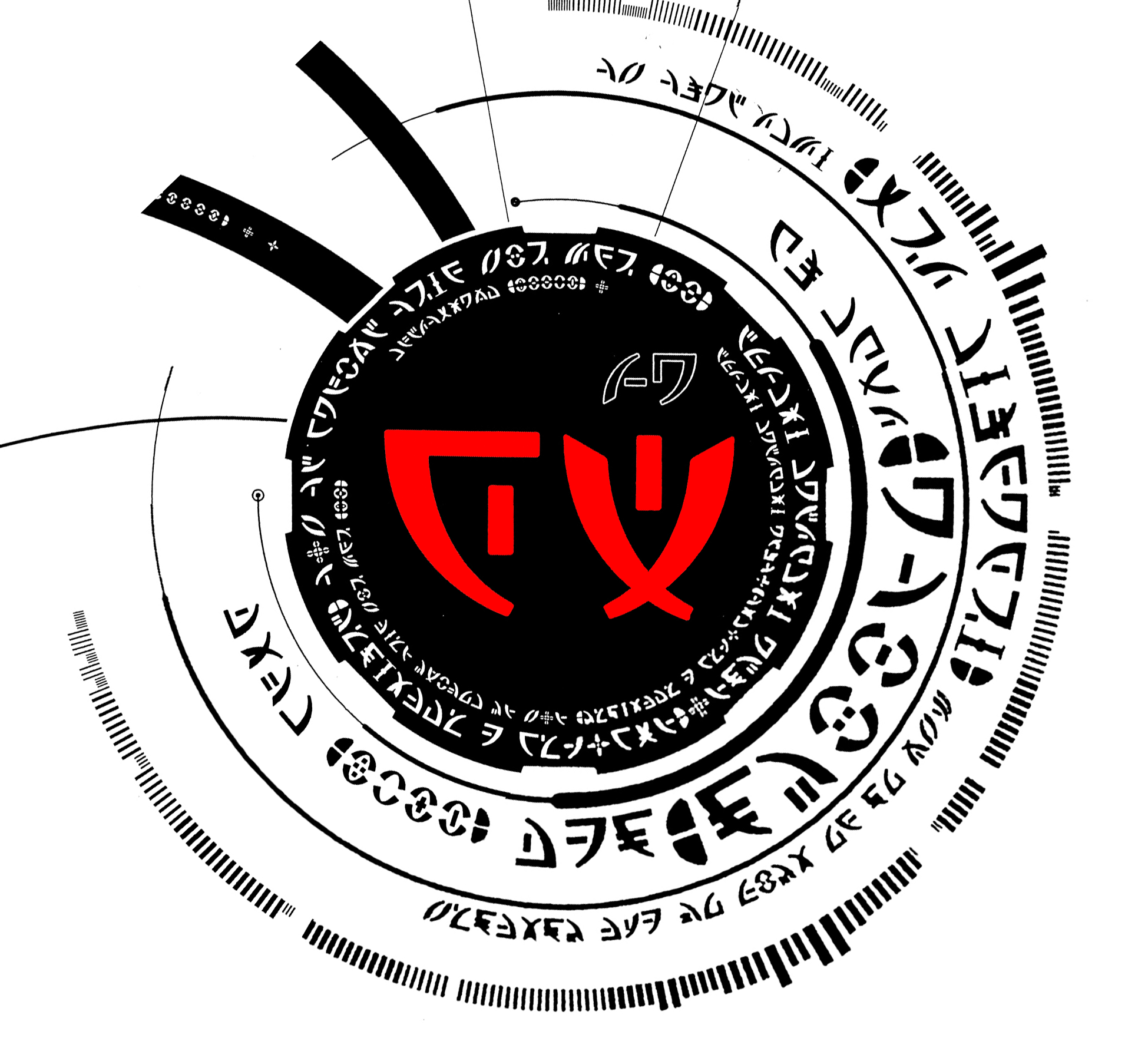
Finally, we have Gel. Transliterated from English, into the ciphertext, as if it were Japanese Katakana, the red characters literally read, from left to right, “GE RU”. I don’t remember if L’s and R’s had different symbols. I toyed with the idea of taking G E L and breaking those letters down by lines and making this more obvious. But there you go.
Initially I believed the cipher to be too easy to decode; so I added characters not found in the English language. One character, placed after another, denotes that the previous character should be repeated. One character, used two or three times if I can remember correctly, denotes the bridging of two syllables, so it repeats the first letter of the character that comes after it. If you’d like to decode the entire thing, you need to know this.
For the rest of it, my advice is to find the vowels: I did nothing to hide them. E and A are the most-used vowels in the entire cipher, so if you do frequency analysis, you can solve this very easily. Strangely, I remember “A” being the most-frequently-used vowel, when it’s usually E. Probably because there were so many names being used!
I also never used the particle ‘a’ by itself, instead sticking it together with the word that was after it. I did, however, allow other particles, like the words ‘to’, ‘the’, and ‘and’, to exist as separate words. These are easy to find in the text.
Perhaps the difficulty in translating this text is that the many English speakers who have encountered it aren’t familiar with Japanese Moras. Sometimes, a ciphertext character denotes two letters: a consonant and a vowel. Other times, it denotes one character only, an English alphabet letter. This no doubt makes this a huge pain in the ass to even attempt.
My advice? Find all the different symbols. Mark them down on a piece of paper. Count them. I didn’t use more than about 30.
Structure and Symbols
You might recognize where the symbols are from. I was influenced by Japanese media: the katakana was made to look like the font used in the various logos for the cartoon, Sailor Moon. Other unique symbols were inspired by the fictitious alien language of the Pfhor civilization, from the Marathon game series.
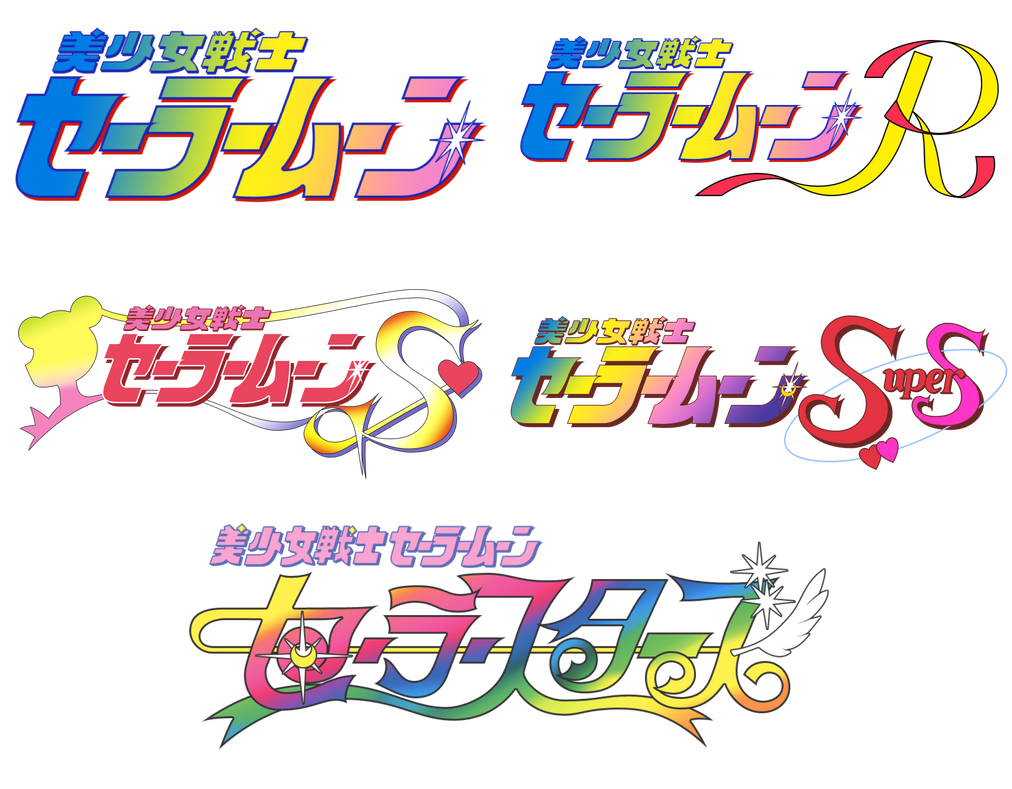
Found at https://www.deviantart.com/joshuat1306/art/Sailor-Moon-Japan-Logos-1st-Anime-915566850
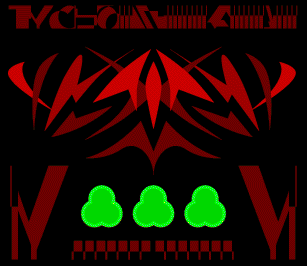
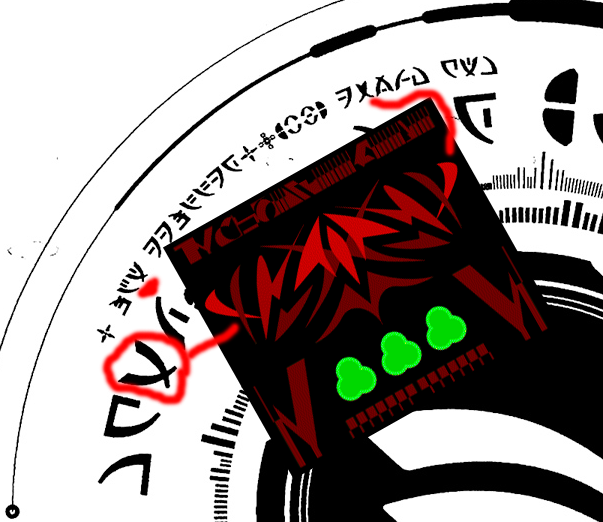
In particular I used disused or rare Japanese katakana characters, like ワ, ヰ, ヲ, ヱ, and I’m not sure that the second or the fourth were ever used. You will see ワ and a stylized ヲ, a lot. I used the characters that confused me the most: Fu, Wa, Shi, Tsu, N, So. A lot of these look very similar, esp. if you’re not a native to the language. One symbol from another language was used: 𝛙. I intended to incorporate alphabets from many different languages— but, if I can recall correctly, I ran out of alphabet letters that I needed, and I was getting tired of using other ones. (One of the things I often do in my ciphertext is make MULTIPLE unique characters for the same letters. It makes it a bit harder to decipher. It does, however, require me to keep very good notes. I’m quite disorganized.)
What it says
Before we begin, I want to point out all the names.

These are the names I’m willing to show you.
The names I can read on this chart are SHI, HANA, GEL, SHANNON, ELIZABETH, LILITH. The other three names I do not have permission to share with you.
Besides the names, I didn’t know what else to put in it. I didn’t want to add gibberish to the text, but I needed something else, because if it was just names, I feared it would be too easy to crack if I added too many names, and actually impossible to crack if I used too few names. So I added filler instead: the sentences in the images are quotes from terminals from the game series, Marathon.
Specifically, I used the unused Jjaro lore terminal from the Marathon Infinity level, ‘Confound Delivery’, as padding, to make it more difficult for people to decode this. I put the text in, character for character: it was not transliterated into Japanese MORAs.
Here is the text of that terminal:
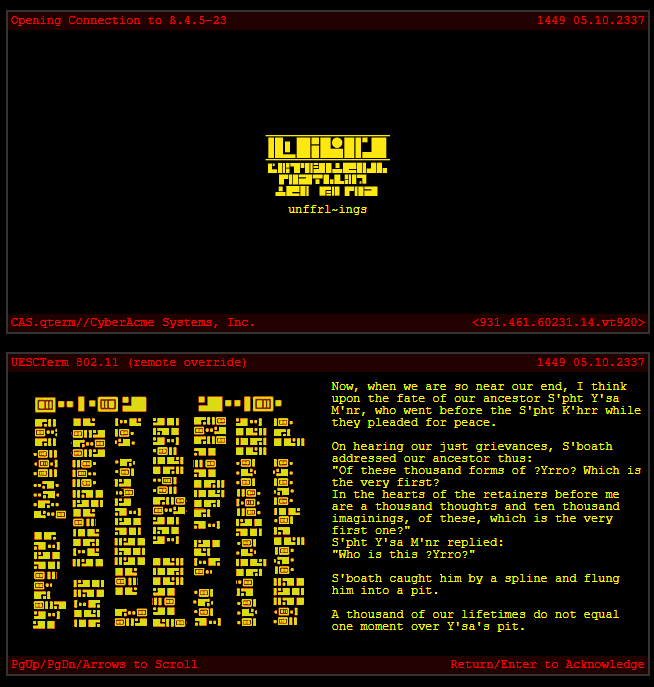
(It would’ve been too obvious.)
The text by itself, not in an image:
Now, when we are so near our end, I think upon the fate of our ancestor S’pht Y’sa M’nr, who went before the S’pht K’hrr while they pleaded for peace.
On hearing our just grievances, S’boath addressed our ancestor thus:
“Of these thousand forms of ?Yrro? Which is the very first?
In the hearts of the retainers before me are a thousand thoughts and ten thousand imaginings, of these, which is the very first one?”
S’pht Y’sa M’nr replied:
“Who is this ?Yrro?”S’boath caught him by a spline and flung him into a pit.
A thousand of our lifetimes do not equal one moment over Y’sa’s pit.
Confound Delivery, deleted terminal from Marathon Infinity
The easiest way to find this text is to find “Yrro”. It will be Y R [character found in one of the name Shannon, right where the nn happens] O”. O can be found right next to that character in SHANNON as well.
The other filler text is from a series of terminals from Marathon 1 and 2, and I slightly edited them. The exact wording might differ. Here they are:
Strive for your next breath. Believe that with it you can do
more than with the last one. Use your breath to power[?fuel] your
capabilities: the capability to kill, to maim, to destroy.And just where do these things come from? Why do you go where I want and do what I say?
Perhaps you are only doing what you were meant to do. Your
soul screams for violence[?vengeance].It is in your nature.
Do you feel free?
Habe Quiddam, a terminal from Marathon 1
and, from the level, What About Bob?, from Marathon 2:
“Hlford will be taking cold showers until he
gets that fixed.”
I included this line because I don’t believe any language that uses the alphabet that English uses will put an H and an L together. I used this both to obfuscate what was being written, and as a clue.
How it was made
The spirals and swirls were made on large pieces of paper, kind of like blotter paper, on my desk. I used various round objects, like sockets and gears and such, and even an ice cream lid, once, to trace round shapes. I then added fine details by hand, with a loved one sometimes helping me. She even helped me make a font in a program whose name I don’t even remember. She aligned the characters by hand when I was in too much pain to use the computer myself.
We specifically kept scanning in, then xeroxing it, over, and over, and over again, because we wanted to get a true black and white image. I feared that I might one day lose my color vision again, so my plan to introduce a synesthetic kind of color encoding wasn’t implemented.
I should also note at this time that the numbering system is basically the Maya numeral system, which, at the time, I believed had been invented for the Sega Saturn game, Magic Knight Rayearth. I took the numbers off of the walls of the hospital in that game, and I thought it was an invention purely made for that game. Nope.
Final Notes
Whenever I create something this intricate, I always lose my notes. So I always try to include what I call a “Rosetta Stone”: something so obvious, so easy to detect, that it can serve as my first foothold when I come across it again and try to solve it.
For this one, if you look very carefully, you will find what should be the only instance of repeated back-to-back exact same characters in the entire chart. When you find these, you will have found the symbol for o, repeated twice. You can also find the symbol for O by figuring out which one of the three names in the spire are SHANNON. (It’s going to be / should be the second-to-last letter in that name, provided I didn’t spell it with a NO mora or something.)
The ciphertext, when decoded, will read ETERNAL SOLDIER SAILOR MOON. :3c
Oh, one more thing I forgot to add: This is how I transliterated text when I had to.
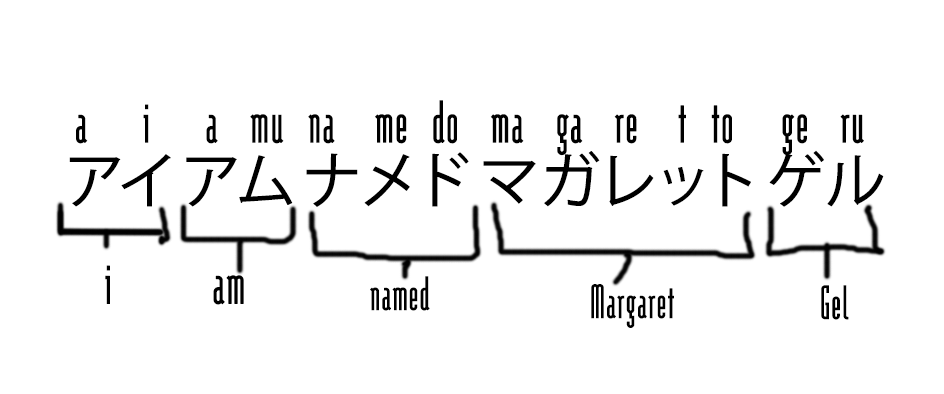
The symbols are different, but this is the concept.